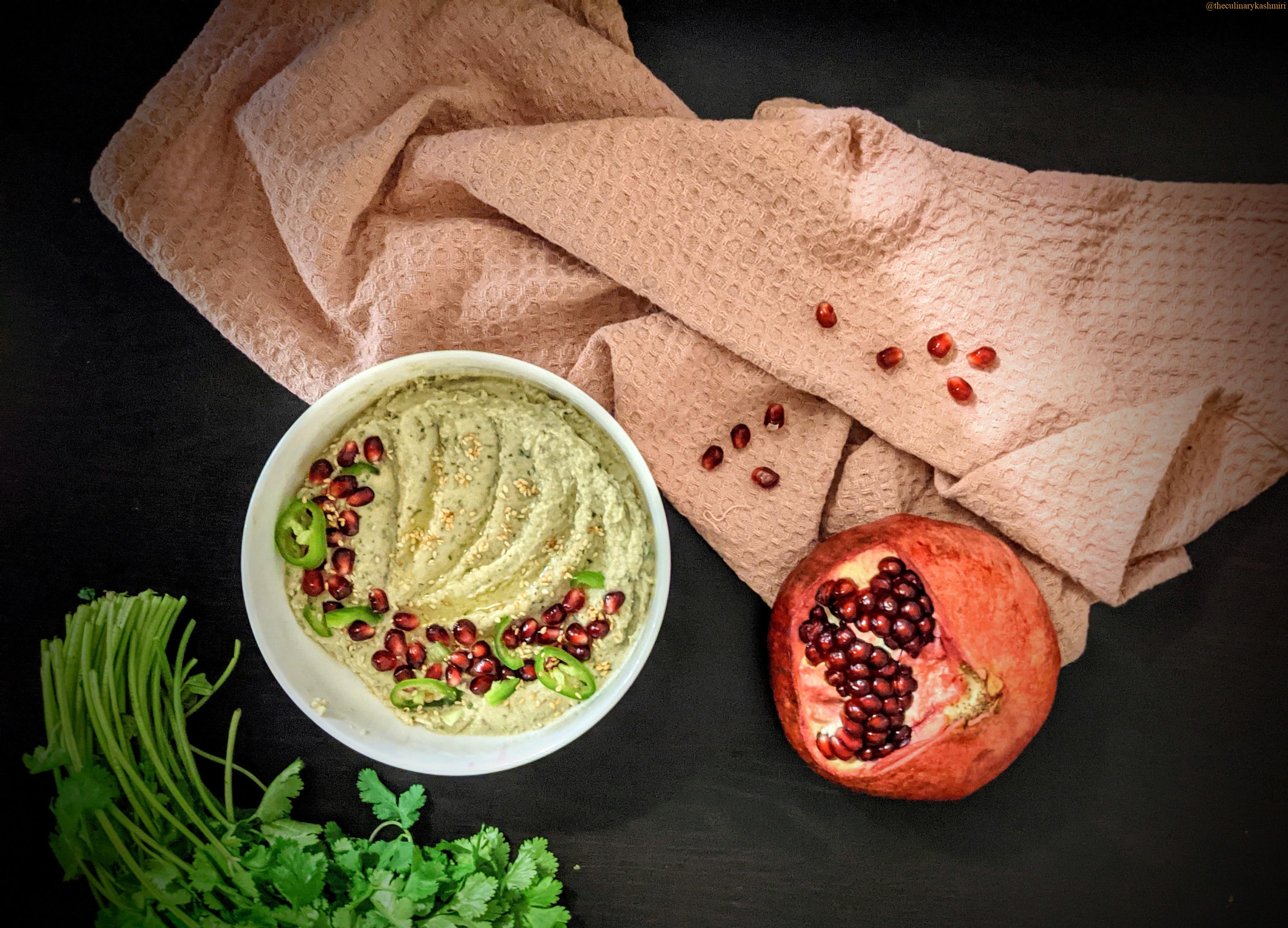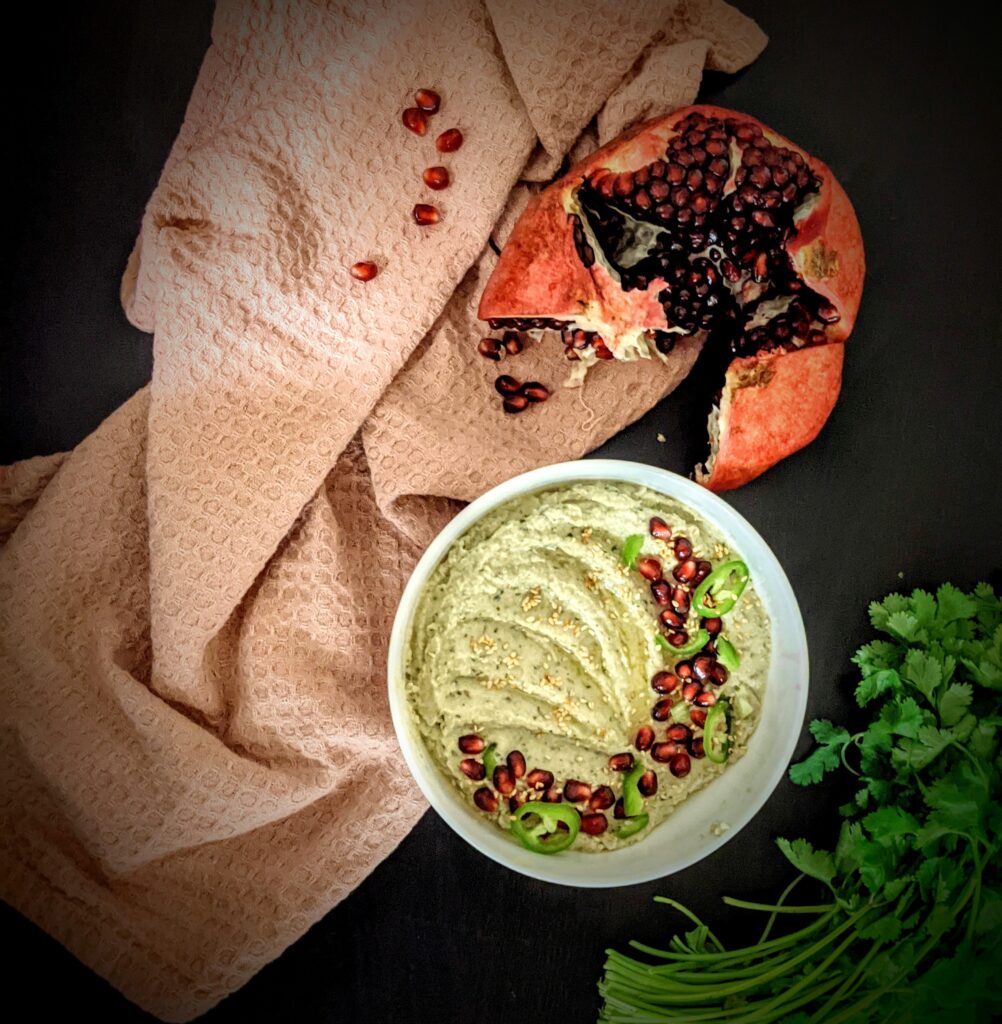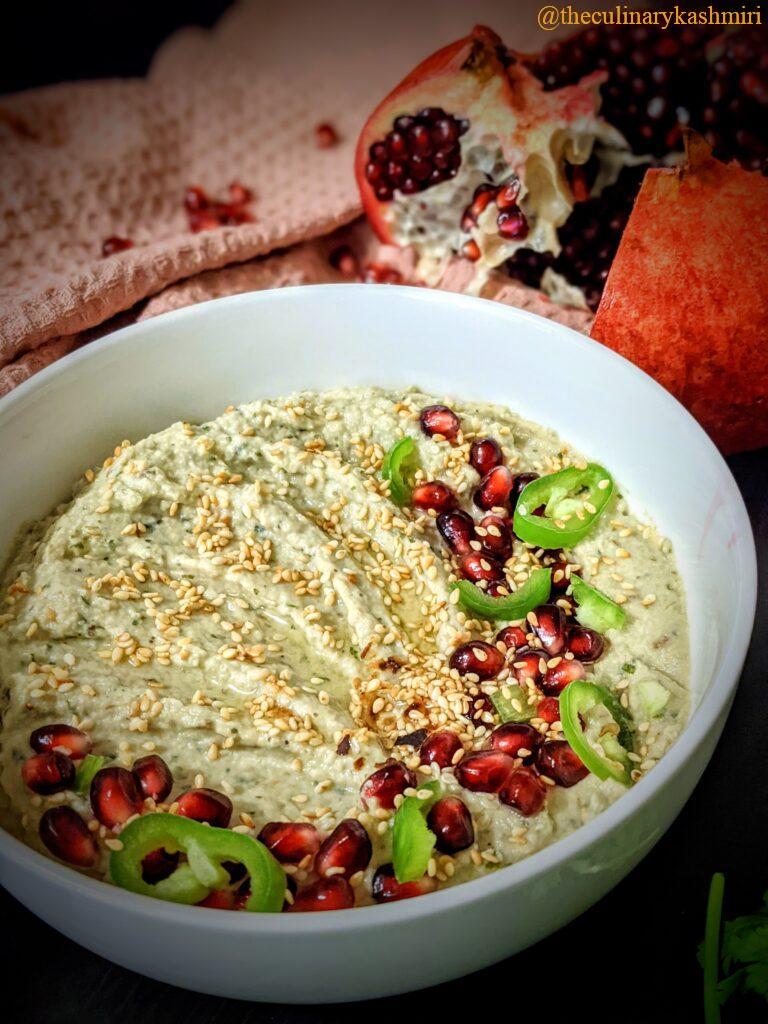Dodh waangan | Brinjal Chutney | Aubergine dip | The best eggplant side

NOTE: For this post, I’m referring to brinjal/ aubergine/ eggplant as waangan. Because, “What’s in a name?” That which we call a waangan, by any other name would taste as good!
Status of the Waangan
Speaking of taste, I think amongst all vegetables, the humble waangun is a rockstar. However, I am deeply appalled by the status of waangan in the eyes of some Kashmiris.
For example, consider the proverb, “Allan hind khaeraat’e waangnan ti sag [By virtue of the bottle gourds, brinjals getting watered too]“. It is used on an instance when commoners reap some benefit out of the favours actually meant for the superiors. My objection: why is the all’e thought to have a superior status in the kitchen garden than the waangan? If anyone knows the answer, get back to me please.
Similarly, another term I find derogatory is “phatwaangun“, which is metaphorically used to describe a cunning person. Even though I acknowledge the cuteness and subtle humour, I think the person who coined this word was not very fond of waangan. Am I a crazy waangan fanatic who feels offended by this because it somehow degrades the image of the poor waangun?
Making unwarranted presumptions on the basis of the above discussion and some warranted personal experience, I am forced to believe that not many Kashmiris like this vegetable. I’ve heard some people say, “Aess zaanav ne waangan ranin [we’ve always refrained from cooking waangan]”, in a tone that suggests that it’s a socially frowned-upon dish to eat. The only fact that contradicts this theory is that some delightful waangan dishes have managed to remain a part of the Kashmiri cuisine, like tchouk waangan, waangan te bam tchoont, etc., in spite of all the contempt against the poor thing, so to say!
That said, I can’t generalize this waangan aversion theory. So, adding some reasonable points to the post (or not), I don’t deny the fact that a lot of people in Kashmir do love to cook and eat waangan. It has been my favourite since childhood. Maybe because I’ve been privileged to have tried a variety of delectable dishes by the best cook ever, my grandmother. She referred to her bharta as buzz’e waangun, and without any exaggeration, it used to be out of this world. I can keep trying to recreate it all my life but the magic of her hands will be missing. Just thinking about it can boost my mood! And tchouk waangan too, obviously.
What is Dodh Waangan?
Dodh waangan used to be another of her signature waangan dishes. I don’t seem to have had it anywhere outside our family. A quick search through the Kashmiri food channels on YouTube also didn’t yield any results. So I am assuming that it is not quite a part of the traditional Kashmiri cuisine. If it is, unfortunately it has lost popularity over time. If not, I wonder whether it was my grandmother’s own recipe or she learnt it somewhere.
Basically, the waangan are roasted on flame until they turn soft and completely charred on the outside. Then the skin is removed and the flesh is mashed. Finally some yogurt and seasonings are added, and that’s it. Easy peasy.
My mom adds peanuts too. However, even though I’m no teenager but peanuts give me pimples. My husband will laugh for 10 minutes straight IF he reads this. (“If” in uppercase should be enough paam/sarcasm.) Anyway, so I use toasted sesame seeds instead of peanuts.
Dodh waangan is something I’ve grown up having. Only in the recent past I’ve discovered that it bears close resemblance to mutabal. It is a similar dish from the Arabic cuisine and the major difference is that mutabal has an additional ingredient: tahini sauce or sesame seed paste. Well, technically, it’s not much of a difference since I use sesame seeds in my recipe for Dodh waangan too. Baba Ganoush from the Lebanese cuisine is also prepared on similar lines, without the addition of yogurt though. End of culinary expertise by the self-proclaimed Culinary Kashmiri!
This recipe is, without any doubt , my favorite for a side/chutney. It goes well as a side for kebabs, roast lamb or grilled chicken, a dip for nachos or breadsticks and serves as a chutney for whatever is on the menu. I would recommend trying this along with my kofte-kebabs.

I must confess that adding pomegranate seeds gives my Dodh Waangan a Middle Eastern touch, but this attempt at improving aesthetics of the picture did enhance the flavour as well. Look at the picture! No self-praise here (the waangan deserves all praises), I can assure you that it tastes just as good.
For anyone who looks down upon this vegetable, trust me, Waangan can create wonders, like this Dodh waangan. Just give it a chance. Now you can choose to ignore all this coming from an unimportant person (Na tren manz na truw’hen manz). I will hold back from further glorifying the waangun because I don’t want to keep insisting irksomely (aedir zaet hui agaadi gatsun). If you still think that waangan is somehow an inferior vegetable, I can go back to the world where nobody listens to me (waen waen kan paeth).
P.S: Another waangan saying I learnt recently: “Nyuk chu paan’e waangnas soumb, yaed chass aangnas soumb!” (Meaning, the boy appears to be as small as an aubergine, but has a tummy as big as a garden.) Although out of context, this one is ridiculously funny, hands down. The unmatched wit and humour in Kashmiri sayings never cease to amaze me. Check out some more classic proverbs and idioms on The Lipton chai blog.

Dodh waangan | Brinjal Chutney | Aubergine dip | The best eggplant side
Ingredients
- 1 tsp olive oil
- 1 large aubergine (brinjal)
- 1 tbsp toasted sesame seeds
- 1 tsp garlic paste
- 2 tbsp yogurt (Ideally Greek Yogurt)
- 1 tbsp lemon juice
- salt to taste
- ground black pepper to taste
- 1-2 green chilies
- 2 tbsp fresh chopped coriander
- pomegranate seeds (optional)
Instructions
- Poke holes in the aubergine all around using a fork, or make cuts using a knife, on all sides. Now roast it on flame for about 10-12 minutes, turning it every minute or so, until the skin is charred and flesh softened. Alternatively, after poking holes in the aubergine, lightly brush it with oil and grill in the oven for 18-20 minutes on high temperature, flipping it half way through. By this time, the flesh should be softened.
- Allow it to rest for some time. Remove the skin when it cools and becomes easy to handle. The skin should come off with ease.
- In a food processor, add the aubergine, toasted sesame seeds, garlic, yogurt, salt, black pepper and lemon juice. Run the machine for half a minute, pause, check consistency and run again if desired.
- Now add in the green chili and coriander. Run the food processor again, for a few seconds until everything is combined well.
- Garnish with some olive oil, sesame seeds and pomegranate seeds. This step is optional.
Notes
- If using the oven, a little liquid smoke or smoked paprika can be added in the end for a smoky flavour. If flame roasting, the smoky flavour comes naturally.
- Peanuts can be used instead of sesame seeds.
- Keep an eye on the food processor. The texture can go from chunky to smooth within seconds. I’d not recommend going for a very smooth texture. But it’s up to you.
